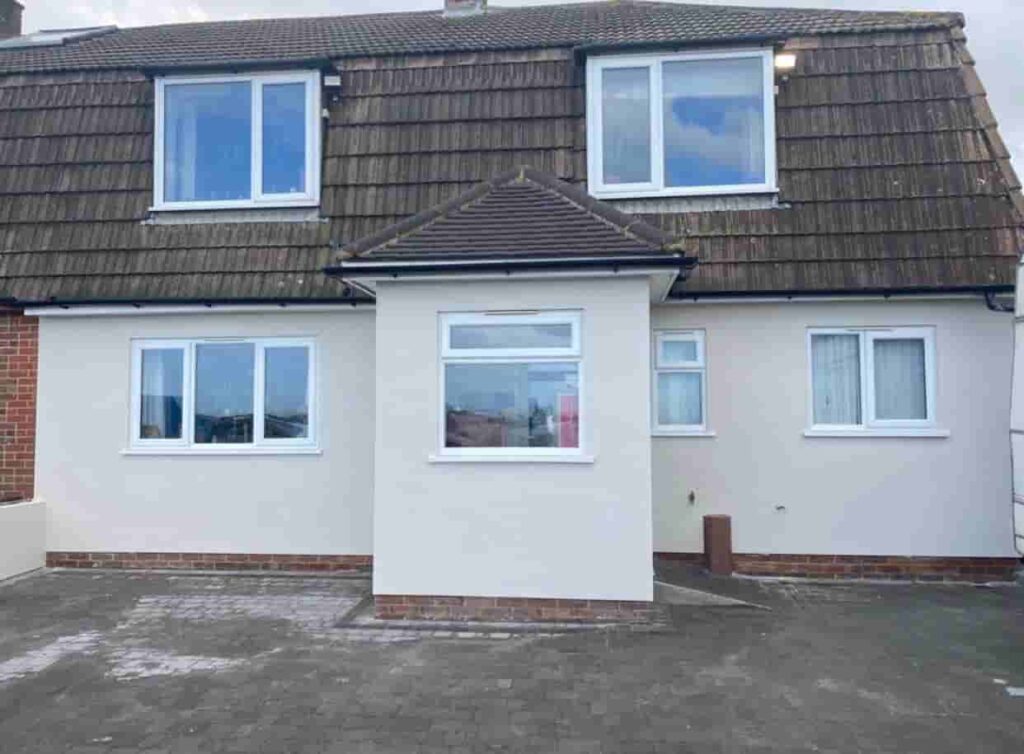Are DIY Flashing Repairs Worth Attempting?
Flashing plays a vital role in keeping your roof watertight, yet it’s one of the most commonly misunderstood and often overlooked components of a roofing system. Designed to seal joints and prevent water ingress around chimneys, valleys, vents, and roof edges, flashing failure is one of the leading causes of roof leaks in UK homes.
At KAM Roofing Askern, we’re often called out to fix problems that started with well-intentioned DIY flashing repairs. While it might seem like a simple job to patch or reseal flashing, the reality is that small mistakes can lead to much bigger issues over time. So, are DIY flashing repairs ever worth the risk?
Understanding What Roof Flashing Does
Roof flashing is typically made from lead, aluminium, or galvanised steel and is installed wherever the roof meets another structure or changes angle. Its purpose is to guide water away from vulnerable joints and direct it safely towards gutters.
Common Areas Where Flashing Is Installed
- Around chimneys and flues
- Along roof valleys where two slopes meet
- Around skylights and roof windows
- Along dormer walls and parapets
- Around vent pipes or other roof penetrations
If flashing is damaged, corroded, or improperly fitted, rainwater can easily penetrate beneath the tiles and into the roof structure, causing internal dampness, wood rot, and insulation damage.
Why Homeowners Consider DIY Flashing Repairs
It’s easy to see why some homeowners in Askern attempt DIY flashing repairs. Flashing damage can look minor — a small crack, a gap in the sealant, or a loose piece of lead — and the idea of fixing it quickly with mastic or sealant can seem appealing.
Common Reasons for DIY Attempts
- To save time and effort waiting for a roofer.
- To address small leaks that appear around chimneys or roof windows.
- To avoid perceived expense of professional repair work.
However, what often starts as a quick fix can end up causing more damage, especially when the underlying issue isn’t properly identified.
The Risks of DIY Flashing Repairs
While some homeowners have basic DIY experience, roof flashing requires specialist skill and understanding of roofing systems. Without that knowledge, even small errors can lead to costly water ingress or long-term structural damage.
The Main Risks Include
- Incomplete sealing: Applying surface sealant doesn’t resolve gaps beneath the flashing.
- Poor adhesion: Many sealants don’t bond properly to damp or dirty metal surfaces.
- Incorrect materials: Using incompatible sealants or flashing materials can cause corrosion or expansion cracks.
- Hidden water damage: DIY repairs often cover symptoms rather than addressing underlying leaks.
- Safety hazards: Working at height without the right equipment can be dangerous.
At KAM Roofing Askern, we’ve seen many situations where DIY flashing repairs actually worsened the leak, allowing water to track deeper into the roof structure before homeowners realised the problem.
Why Flashing Repairs Require Professional Expertise
Proper flashing installation and repair demand precision, experience, and knowledge of how water behaves on different roof designs. Professional roofers assess the full condition of the roof before repairing or replacing flashing, ensuring that all potential entry points are properly sealed.
What Professionals Do Differently
- Comprehensive inspection: Identifying the root cause rather than just the visible problem.
- Material matching: Using compatible metals and sealants to ensure long-term durability.
- Weatherproof detailing: Correctly shaping, bedding, and securing flashing for a watertight finish.
- Structural checks: Ensuring surrounding tiles, mortar, and underlay are also intact.
KAM Roofing Askern provides expertly installed and repaired flashing systems designed to last, giving homeowners complete confidence that their roof is fully protected.
Signs That Your Flashing Needs Attention
Even the most robust flashing will eventually show signs of wear. Regular roof inspections help catch problems before they turn into leaks.
Watch Out For:
- Cracked or crumbling mortar around chimneys.
- Loose or lifted lead flashing.
- Rust or corrosion on metal flashing strips.
- Discolouration or damp patches near roof junctions.
- Persistent leaks after rain, even if tiles appear intact.
Spotting these warning signs early allows you to schedule timely professional maintenance before more serious water ingress occurs.
Long-Term Benefits of Professional Flashing Repairs
Addressing flashing problems correctly the first time offers far greater value and peace of mind than any temporary DIY patch.
Advantages of Hiring Experts
- Prolonged roof lifespan: Prevents leaks that can damage internal structures.
- Improved weather resistance: Ensures joints remain sealed during heavy rain and wind.
- Enhanced appearance: Properly finished flashing complements the roof’s overall look.
- Reduced maintenance: Professional repairs typically last for decades when maintained properly.
KAM Roofing Askern takes a preventative approach to roof maintenance, ensuring every repair adds long-term value and stability to your home.
Conclusion
DIY flashing repairs might seem convenient, but they rarely offer a lasting solution. Flashing is one of the most critical components of any roofing system — and when it fails, the consequences can be serious. Professional inspection and repair ensure the problem is properly diagnosed, safely fixed, and fully waterproofed for the long term.
KAM Roofing Askern in Askern, South Yorkshire, provides expert flashing repair and replacement services designed to protect your property from water ingress and weather damage. When it comes to roof flashing, it’s always best to trust experienced professionals who understand how to keep your roof secure, durable, and watertight year after year.
Call us on: 01302 496 292
Click here to find out more about KAM Roofing Askern
Click here to complete our contact form and see how we can help with your roofing needs.

